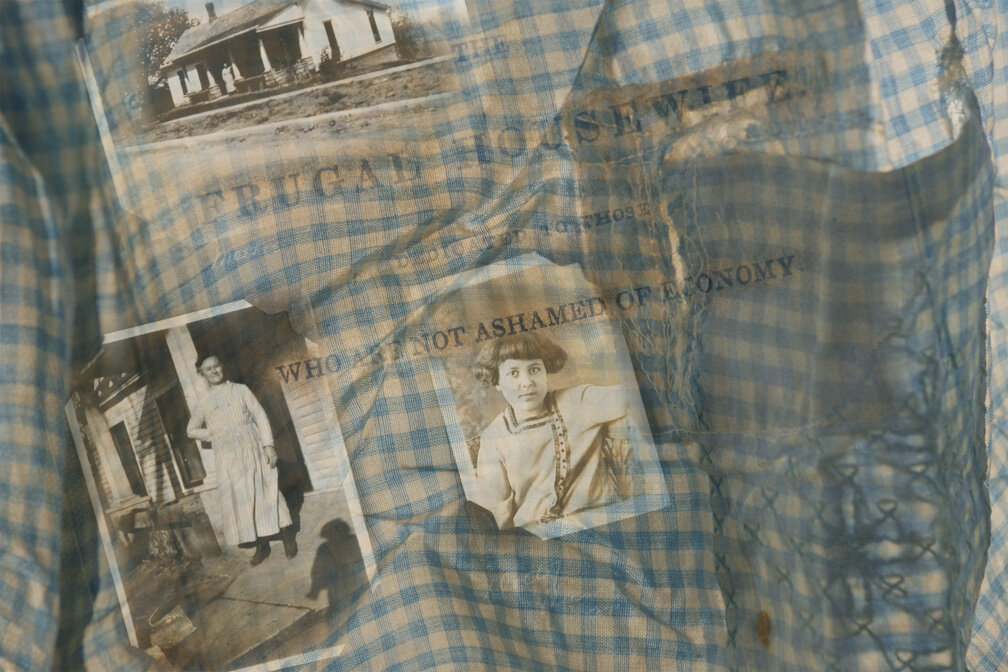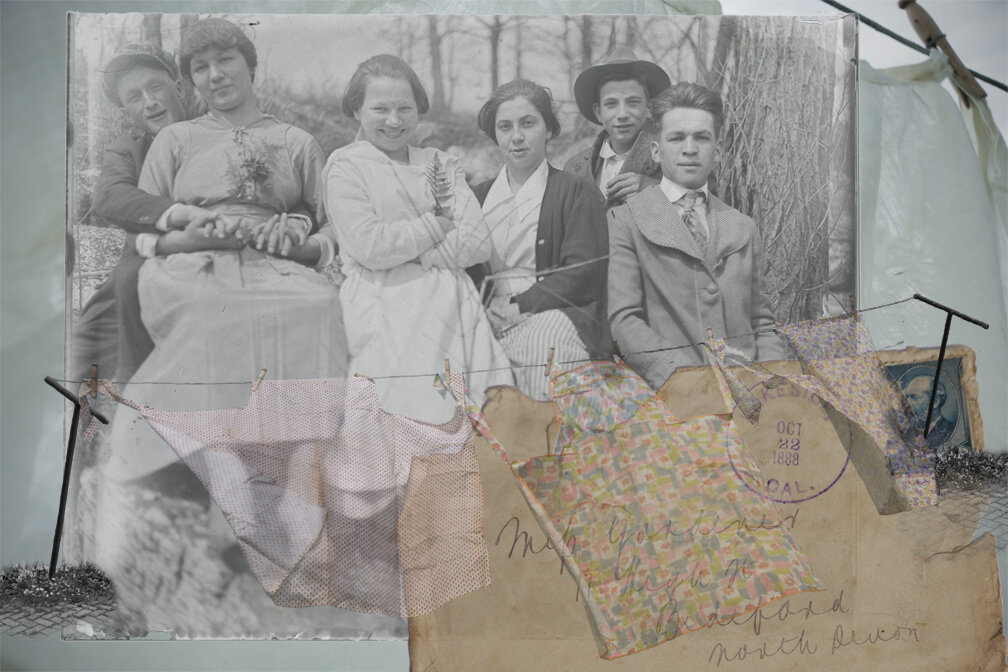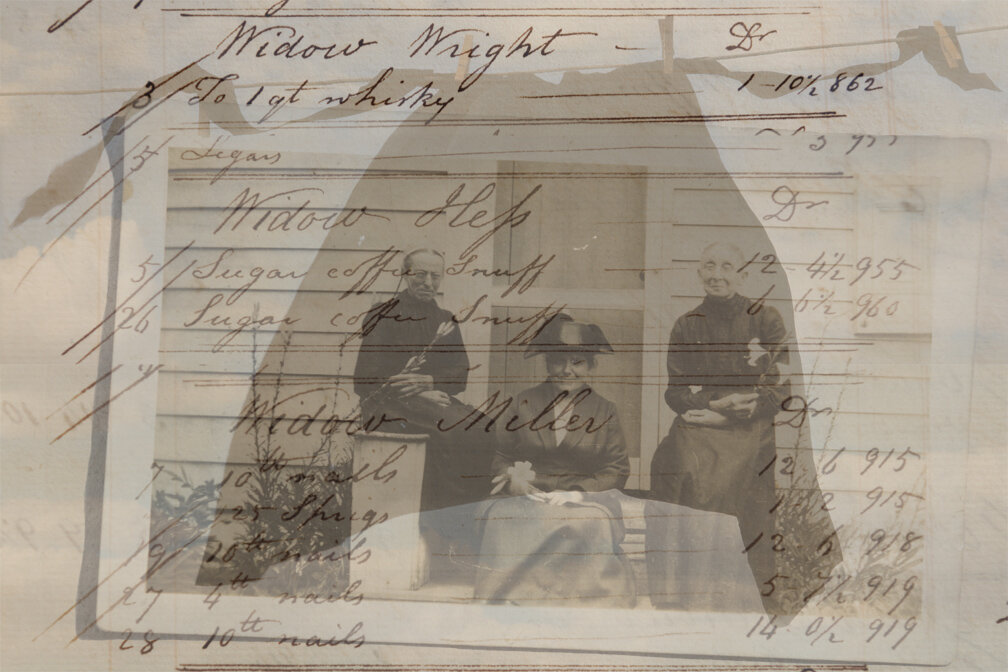“Ties that Bind”

















STATEMENT
My paternal grandmother had three. Seven days a week she chose to wear one from sun up to sun down but never in public. My mother had two hidden in a kitchen drawer and decided not to wear any several years before I was born. There are no photographs of my mother in an apron but I know that she wore one on occasion the aprons in that drawer had holes and stains.
My mother was raised in a strict Mennonite family which required a woman to perform her “duties” and not be a critic of the religious practice. She explained to me years later her reason for not wearing one for to her the Apron signified “servitude” and that she was not a servant. Wishing her daughter to be raised with the freedom to make her own decisions the Mennonite traditions were not discussed.
When it came time to take my high school home economics class among the required fulfillment in that class was to make an apron. I had to sew one or face failure. With much hesitation, I made a cute half apron out of some cotton material and put rickrack around the pockets, hem, and top. Outside of class I never wore it.
In “Ties that Bind” I use the Apron as a metaphor addressing the burdens that women were forced to abide by for centuries that are deeply rooted in religious history. Like a plague, women were to be dutiful and to conform to the belief that they are to be subordinate and accept it, they had little choice and some did this willingly while others did not. This project honors those women, mothers, and mother’s before them who persevered, often setting their goals and personal feelings aside, to accomplish their duties and later bring change to the stigma of subservience.
I have been collecting aprons and photographs of women for more than 30 years. Being a curious individual during my collecting I made it a point to also gather information about the women when possible I have included personal items, written articles, or photographs of the home where the aprons were acquired.
Note:
In biblical reference Adam and Eve, feeling humiliated for sinning cut leaves and made aprons to cover themselves. Later Peter, at Passover, stated “Be clothed with humility” which in Greek means “put on the Apron of humility.” Thus the apron became the symbol of service. Upon later studies, I understood why my mother felt that way. But the apron also served other purposes such as protection of one’s clothing and skin. Early aprons were made from animal hides and later woven fabrics. No matter what material was used the religious meaning of the Apron remained for centuries and reflected that of servitude, duties, and lower class.
All images and content Copyright © 2000 - 2021 Barbara J. Dombach, all rights reserved